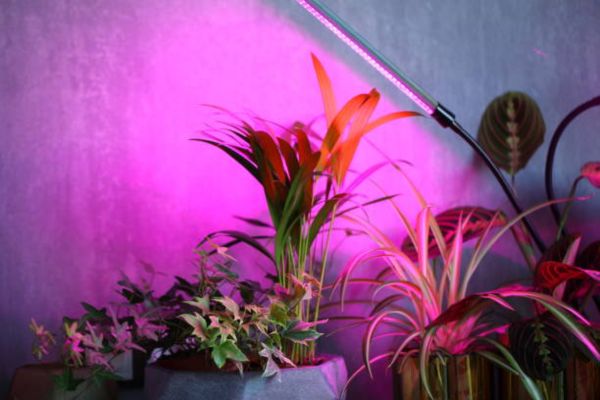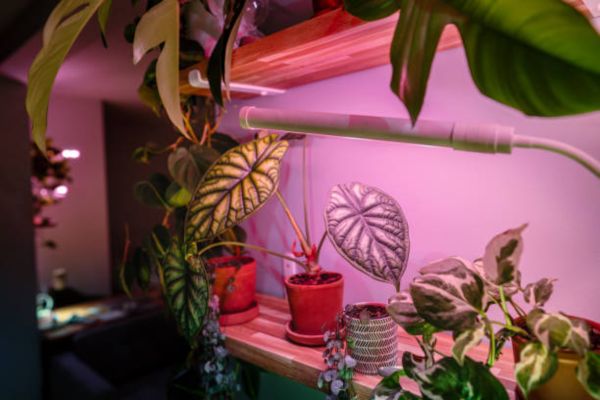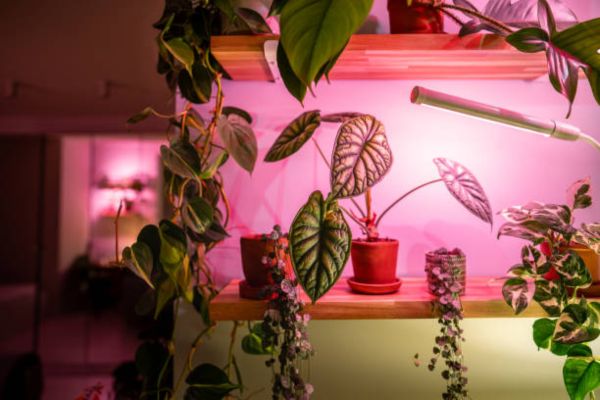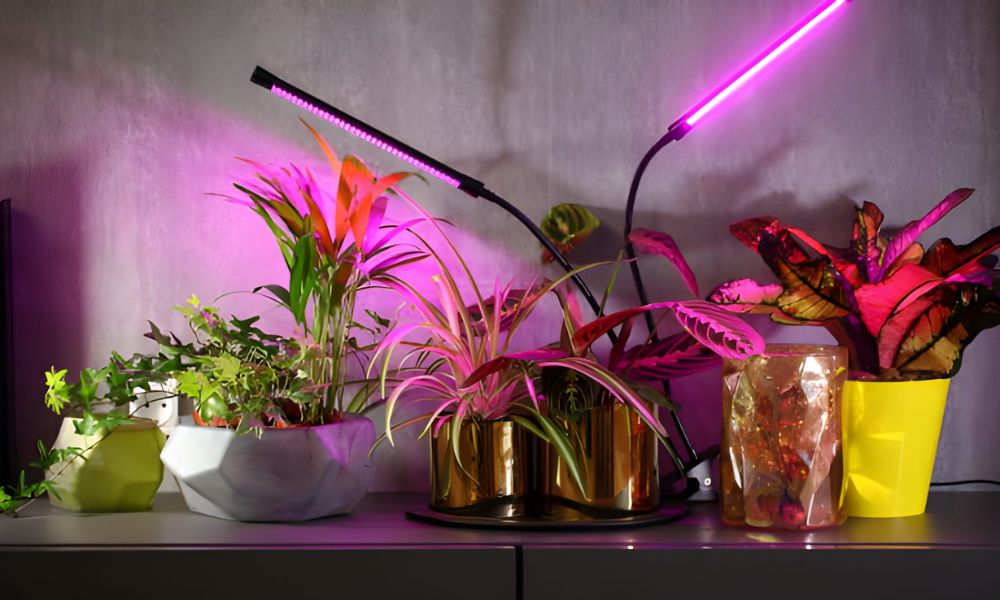Ever wondered how long to keep grow lights on indoor plants before it does more harm than good? I used to think leaving them on all day would make my plants grow faster — until I woke up to droopy leaves and tired soil. That’s when I learned plants, like us, need rest to thrive. Over the years, I’ve experimented with various schedules, from 12-hour cycles to full-day lighting, to determine what works best. In this guide, I’ll share what I’ve learned — the science, the sweet spots, and practical tips — so your plants can grow strong, healthy, and full of life.
Why Light Duration Matters for Indoor Plant Growth

Light is food for your plants. It helps them make energy and stay alive. Through photosynthesis, they turn light into growth. But darkness matters too. Plants need rest to stay strong — just like we do after a long day.
You may wonder, “Do grow lights work?” They do. Grow lights act like sunlight for plants indoors. Still, too much or too little light can hurt them. I learned this when my basil started to droop and fade. After cutting light time from 18 hours to 14, it bounced back fast.
Think of light like a cup of coffee — enough keeps you alert, but too much makes you shaky. The same goes for your plants. Balance light and dark so they can breathe, rest, and thrive.
Ideal Light Hours for Different Types of Indoor Plants

Every plant has its own light rhythm. Some love long, bright days, while others need a little more rest. Finding the right timing keeps your plants growing fast and healthy without stress.
Leafy Greens and Herbs
Leafy greens, such as spinach and lettuce, and herbs like basil or mint thrive with 12–16 hours of light daily. This range gives them enough energy to grow full leaves while allowing a short dark period for recovery. I noticed my mint became greener and more fragrant when I added a small rest period at night.
Flowering and Fruiting Plants
Plants that bloom or bear fruit — like peppers, tomatoes, or orchids — need more light to produce energy for buds and fruit. Aim for 14–18 hours each day. Using a timer keeps their routine steady, even if you forget. When I added a smart timer to my setup, my small tomato plant doubled its fruit within weeks.
Seedlings and Young Plants
Seedlings are light-hungry. They need 16–18 hours of grow light each day to build strong stems and roots. Too little light can make them tall and weak. I’ve tested this many times, and the difference is clear — steady light builds sturdy growth.
Can You Leave Grow Lights On 24/7?

Many people think more light means faster growth. It doesn’t. Plants need dark time to rest and reset. Without it, they get stressed.
In the dark, plants balance energy and “breathe.” This helps them move sugars and repair cells. Skipping the dark phase can slow growth. Leaves may fade or curl.
I tried nonstop light once. My basil looked fine for two days. Then the leaves went pale and the tips curled. I changed to 14 hours on and it bounced back.
How to Find the Right Light Schedule for Your Plants

Every plant is a little different. Some need long, bright days. Others prefer shorter ones. The right schedule depends on plant type, age, light strength, distance, and even the season.
When I first started, I often asked myself, how long to leave grow lights on? The answer came through trial and error. I used a smart plug timer to test different hours. It made life easier — lights came on and off by themselves, and my plants stayed happy and even.
Here’s a simple guide you can follow:
| Plant Type | Light Hours per Day | Dark Hours per Day |
| Leafy greens & herbs | 12–16 hours | 8–12 hours |
| Flowering & fruiting plants | 14–18 hours | 6–8 hours |
| Seedlings & young plants | 16–18 hours | 6–8 hours |
| Low-light houseplants | 10–12 hours | 12–14 hours |
I keep my lights about 12 inches above most plants and raise them as they grow. Too close burns leaves; too far slows growth. Small changes — like moving a light or shifting the timer by an hour — can make a big difference.
Do LED Grow Lights Work for Indoor Plants?
Yes, they do. LED grow lights help plants grow strong and green. They use little power and stay cool. LEDs give full-spectrum light, just like the sun. You can keep them close without burning leaves.
Old bulbs waste power. Fluorescent lights fade over time. Incandescent bulbs get hot and can harm plants. LEDs last longer, use less energy, and give steady light all year.
When I switched to LEDs, my basil and parsley grew faster. In two weeks, the leaves looked greener and stronger. Even in winter, they stayed bright and healthy.
Special Case – Lighting for Meyer Lemon Trees Indoors
Meyer lemon trees need lots of light to grow and make fruit. They do best with 14–16 hours of bright light each day. Without it, they may lose leaves or stop blooming.
The best grow light for Meyer lemon tree care is a full-spectrum LED. Use one with 40–60 watts and place it 12–18 inches above the leaves. This gives even light without heat stress.
I tried this with my own tree last winter. After two weeks, the leaves looked greener, and small buds started to show. A timer kept the schedule steady, and soon the room smelled like fresh lemons.
Practical Tips for Managing Grow Light Schedules

Keeping a steady light schedule is key to healthy plants. It sounds simple, but timing makes all the difference. I’ve found that a little planning saves a lot of trouble later.
Start with an automatic timer. It turns lights on and off at the same time each day, so your plants never miss their rhythm. I use a smart plug that connects to my phone — easy to set and forget.
Next, check your light height. Keep lights 12–18 inches above the leaves. If they’re too close, leaves may burn. Too far, and growth slows down. I adjust mine every week as plants get taller.
Don’t forget to rotate your plants weekly. This helps every side get equal light and stops uneven growth. It’s a small habit that keeps plants looking full and balanced.
Here’s my quick Light Routine Checklist you can follow:
- Set timers for 12–16 hours of light
- Keep lights 12–18 inches above plants
- Rotate plants once a week
- Clean light covers monthly for brightness
- Watch for leaf color — pale means too much light, dull means too little
FAQs
Can I leave my grow lights on all night?
No, you shouldn’t. Plants need the dark to rest and use stored energy.
What happens if grow lights are on too long?
Too much light can dry out leaves or make them turn yellow. It also slows growth over time.
Do LED grow lights use a lot of electricity?
Not at all. LEDs are very energy-efficient and cool-running, so they’re great for long use.
Final Thoughts
Plants grow best with balance. They need bright light to build energy and dark time to rest. Too much light can harm them. Too little slows growth.
Every plant is different. Watch your leaves and growth speed. Try small changes until you find what works best. I learned this by testing light hours and seeing what made my plants happiest.
Be patient. Growth takes time. Once you find the right rhythm, your plants will thrive with little effort.

